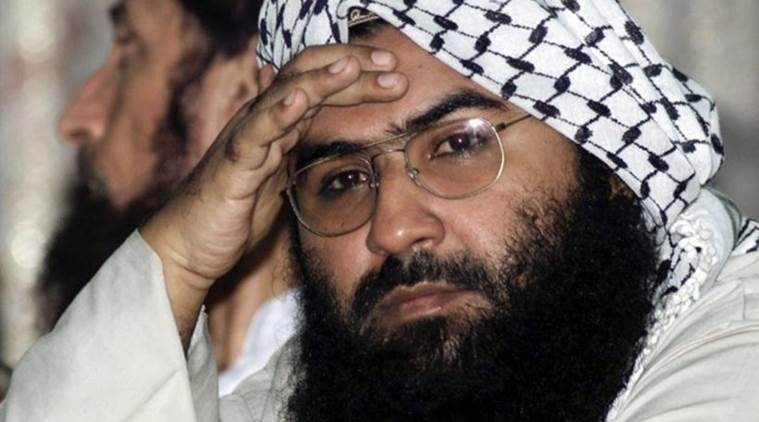Jaish’s journey: Parliament attack to Pulwama

For 12 long years, security forces believed they had wiped out the Jaish-e-Mohammad in Kashmir, eliminating its top leadership in a series of attacks. With its February 14 suicide attack killing 40 CRPF personnel, in one of Kashmir’s deadliest attacks ever, the terror outfit that has repeatedly brought India-Pakistan ties to the brink, has done it again.
Sheltered by Pakistan and protected by China, founder Maulana Masood Azhar — who has himself spent all of one month in Kashmir, back in 1994 — has now steered the Jaish through the 2001 Parliament attack, the January 2016 Pathankot air base attack, as well as the September 2016 Uri attack. The Jaish has introduced suicide missions to the Valley, as well as bombers driving explosives-laden vehicles, like in Thursday’s attack. In all the recent attacks in Kashmir, the Jaish is a suspect.
Its recent surge coincides with the Taliban coming forward for talks in Afghanistan, helped by Pakistan. The Jaish has close links with the Afghan Taliban, and the Kashmir attack sends a message to its negotiators, as well as the Taliban’s own men, at a time when it is seeking peace after years of war.
Security forces say the Jaish is now the third largest militant group operating in the Valley, behind the Hizbul Mujahideen and Lashkar-e-Toiba. But it is behind most of Kashmir’s deadly attacks in the past two years. The loss of over 40 men, including several top commanders, in the past one year has hardly dented its strength.
Police records show 56 militants in its ranks in the Valley, most of them Pakistanis (33, compared to 23 locals). Twenty-one of these militants (19 of them foreign) operate in the three districts of North Kashmir. South Kashmir has around 35 Jaish militants, 21 of them locals. The Jaish is believed to have no presence in Srinagar, Budgam and Ganderbal districts in Central Kashmir.
Soon after, he is believed to have founded the Jaish. A couple of months later, the Jaish marked its arrival in Kashmir with the Valley’s first ever human bomb a 17-year-old drove an explosives-laden Maruti car to the headquarters of the Army’s 15 Corps in Srinagar. The car exploded at the gate as the school boy from downtown Srinagar panicked and pulled a trigger too early. On Christmas Day the same year, the Jaish sent a 24-year-old British citizen driving another explosives-laden Maruti car to the 15 Corps headquarters. Eleven people, including five soldiers, were killed in that attack. A profile of the bomber subsequently appeared in the Jaish’s official publication, Zarb-e-Momin.
With these attacks, the Jaish underlined its difference with the Lashkar-e-Toiba, which had refrained from suicide attacks as suicide is prohibited in Islam.
In another difference with the Lashkar, the Jaish shared an umbilical cord with the Taliban. It would continue to retain it, to the embarrassment of Pakistan, even after Islamabad came under pressure following 9/11. The Jaish’s subsequent operations threatened to push India and Pakistan to war several times. In fact, the Jaish’s suicide attack on the J&K Assembly on October 1, 2001, less than a month after 9/11, was the first attack in Kashmir — 12 years after the start of militancy — that was officially condemned by Pakistan. The Pakistan Foreign Office used the term ‘terrorism’ to criticise it. Islamabad’s hand was forced not just by the death of 23 civilians in the incident, the largest number killed in a Kashmir attack, provoking outrage, but also because the Jaish identified the suicide bomber as a Pakistani, Wajahat Hussain.
The Jaish also lost backing within the Pakistani security establishment when its members carried out two assassination bids on then president Pervez Musharraf in 2003.
In India, the security forces coincidentally gained ground against the outfit by infiltrating its ranks. In early 2004, a mole deep inside the Jaish helped the security forces hit a meeting of its entire top brass in Lolab, killing all.
For more than a decade after that, the Jaish struggled to regain a foothold in Kashmir, even as it kept losing men. In March 2011, its Kashmir chief, Sajad Aghani, was killed along with his associate Omar Bilal on the banks of the Dal Lake. Three months later, another mole helped security forces kill a Jaish commander.
Afghani was succeeded by Qari Yasir, a Pakistani, but he was killed in an encounter in Lolab Kupwara in July 2013. After Yasir, Adil Pathan became the Jaish chief in the Valley, but was killed along with associate Abdul Rehman, a Myanmarese, at Tral in October 2015. Pathan was the brother of the Jaish’s Pakistan-based operations chief, Mufti Asghar.
Courtesy : The Indian Express
